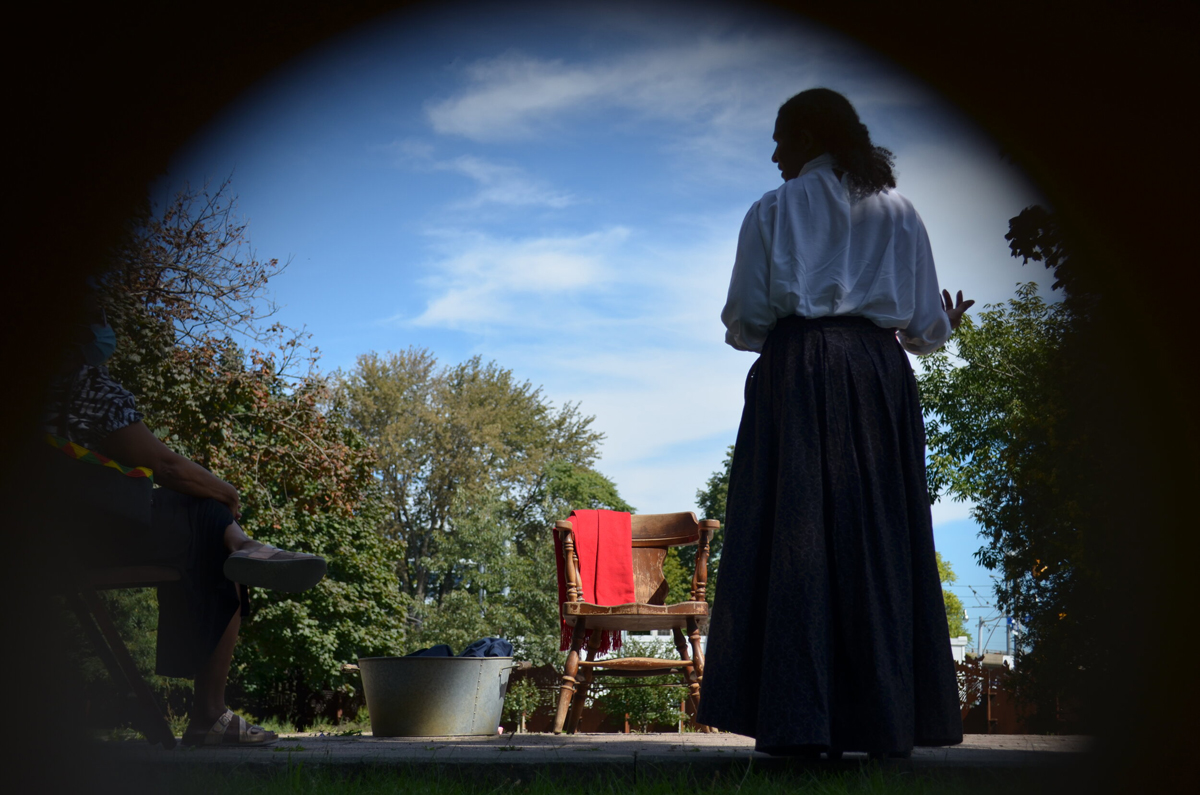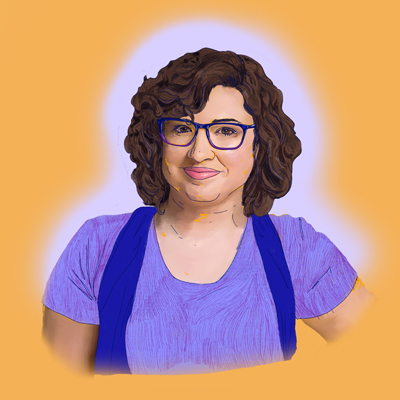
TELLING STORIES
Performative Storytelling
Image source: Anne Zbitnew
Storytelling is a performance medium that is as old as civilization. The National Storytelling Network defines storytelling as an ancient art form and a valuable mode of human expression. Storytelling involves a two-way interaction between storytellers and listeners with responses of the listeners influencing the telling of the story.
The listener imagines the story, and their role is to actively create vivid multi-sensory images, actions, characters, and events in their mind based on the performance by the teller and on the listener’s own past experiences, beliefs, and understandings. The completed story happens in the mind of the listener who becomes a co-creator of the story.

Spotlight: I am Lucie, I am Thornton
In 2021, as part of the STEPS CreateSpace Public Art artists-in-residence program, Lurch created a public art activation at Inglenook Community School in Toronto, site of the 1800s residence of anti-slavery activists Thornton and Lucie Blackburn. The project celebrates the Blackburn's lived experience on the land, their activism, and contributions to Toronto. A performance that was part of the project, I Am Lucie I Am Thornton, brought the past to the present with Lurch embodying both Lucie and Thornton on the grounds of their former home, recounting their history in the tradition of oral storytelling.
Charmaine Lurch is an interdisciplinary visual artist who works with a range of material to draw and reshapes our understanding of how Black people grace, positively transform, and belong in the spaces and landscapes they inhabit. She creates work that displays Black peoples' long spiritual, social, and physical connections to space and place.
The performative intervention, I am Lucie, I am Thornton intertwines space and time in relation to the audience and the landscape. Thornton and Lucie Blackburn were Black entrepreneurs, activists and community builders who lived in the area formerly known as the Ward of Toronto. Having escaped the horrors of slavery in Kentucky, they dedicated themselves to helping others do the same and their Sackville Street home became a stop on the Underground Railroad. They housed formerly enslaved people and helped them find and settle in homes around the Ward. The Blackburns' started Toronto's first taxicab company in 1837 and were a fixture on King Street, devoting their lives to movement, to community, and to each other. Read more about this project here.
Theatre as Storytelling
Actor Faran Tahir, who plays the title role in the Shakespeare Theatre Company's 2017 production of Othello, believes theatre to be a great medium for storytelling. The greatest thing about theatre, in Tahir's view, is that it adds another character - the audience - to the room, to the place, and they experience it with you. The connection on stage between actors is the same, visceral connection between actors and audience, one you can't find when you put a camera in front of somebody. The immediacy of theatre is part of its beauty. "On a poetic level, something that I love is that you create a moment, and you selflessly then must let it go. It's not being recorded. It's not going to come back. It is going to be a different moment the next day and to me that's a beautiful thing to be able to just let it be," says Tahir.
Profile: Sarah Magni
Illustration by Rachel Asevicius
Sarah Magni is the founder and artistic director of Thatz Showbiz Theatre project, a non-profit organization that provides theatre education and programming for youth traditionally underrepresented in the theatre. The project works to "centre the voices and stories of youth and adults with intellectual disabilities and who are neurodivergent, BIPOC youth, LGBTQTS+, youth and youth and adults at all intersections of these identities."
The organization follows a three-pillar anti-oppression framework grounded in education, advocacy, and action, and emphasizes the importance of all three working in conjunction with each other. Thatz Showbiz's "radical accessibility" approach includes learning about the history of disability in theatre and examining the systems and norms that continue to exclude people with disabilities from the performing arts. Basic ASL is one of the many forms of creative expression and communication used in the programs. Among its advocacy and action initiatives, the theatre advocates for and practices making space for actors with disabilities and has conducted extensive research to inform its accessibility workshops.

